Sejogwan of the Royal Room (왕의지밀 세조관)
13.5Km 2024-12-23
5218-18 , Chunhyang-ro, Wansan-gu, Jeonju-si, Jeonbuk-do
+82-63-284-1004
Wangui Jimil Sejogwan (‘Royal Room of King Sejo’) in Jeonju, Jeollabuk-do, is a hotel that combines hanok style with modern facilities - one of a group of hotels named after Joseon kings. There are six rooms, divided into Gold and Silver class, and all equipped with bathrooms and toilets. Rooms have exposed beams and traditional furniture, and the scenic views and chirping of insects beyond the large windows add to the charm. Additional facilities include a hanok cafe, a restaurant, and a convention center. Guests can reach anywhere in Jeonju Hanok Village in about 10 minutes by car.
Gojonggwan of the Royal Room (왕의지밀 고종관)
13.5Km 2024-12-23
5218-18 , Chunhyang-ro, Wansan-gu, Jeonju-si, Jeonbuk-do
+82-63-284-1004
Wangui Jimil Gojonggwan (‘Royal Room of Emperor Gojong’) in Jeonju, Jeollabuk-do, is a hanok hotel that combines hanok style with modern convenience - one of a group of hotels named after Joseon kings. The hotel has six rooms graded 2, 3 and 5 with Silver rooms and Gold rooms. All rooms have a bathroom and toilet, and the sunlight pouring through the large windows adds coziness to the interior. Additional facilities incude a hanok cafe, a restaurant, and a convention center. Guests can reach anywhere in Jeonju Hanok Village in about 10 minutes by car.
Seonjogwan of the Royal Room (왕의지밀 선조관)
13.5Km 2024-12-23
5218-16 , Chunhyang-ro, Wansan-gu, Jeonju-si, Jeonbuk-do
+82-63-284-1004
Wangui Jimil Seonjogwan (‘Royal Room of King Seonjo’) in Jeonju, Jeollabuk-do, is a hotel combining hanok style with modern facilities - one of a group of hotels named after Joseon kings. The hotel has six rooms graded 2, 3 and 5, with Silver rooms on the 1st floor, and Gold rooms on the 2nd floor; as there is no elevator, it’s recommended that elderly guests book into a 1st floor room. Additional facilities include a hanok cafe, a restaurant, and a convention center. Major tourist attractions such as Namgosa Temple and Jeonju Hanok Village are 10 minutes away by car.
Sukjonggwan of the Royal Room (왕의지밀 숙종관)
13.5Km 2024-12-23
5218-14 , Chunhyang-ro, Wansan-gu, Jeonju-si, Jeonbuk-do
+82-63-284-1004
Wangui Jimil Sukjonggwan (‘Royal Room of King Sukjong’) in Jeonju, Jeollabuk-do, is hotel combining hanok style with modern facilities - one of a group of hotels named after Joseon kings, which are popular with family travelers. There are 6 guestrooms, most with exposed beams and traditional furniture; and the Grade 2 Gold and Silver rooms, big enough for six people, are especially popular with family travelers. Some rooms have two beds and a jacuzzi. Additional hotel facilities include a hanok cafe, a restaurant, and a convention center. Major tourist attractions such as Namgosa Temple and Jeonju Hanok Village are 10 minutes away by car.
King of young jo [Korea Quality] / 영조관 [한국관광 품질인증]
13.6Km 2024-04-07
5218-12 , Chunhyang-ro, Wansan-gu, Jeonju-si, Jeonbuk-do
+82-63-284-1004
Yeongjogwan is named after the 21st Joseon king Yeongjo and is in a complex of 11 hanok buildings named for Joseon kings. The hotel is in Wansan-gu, Jeonju, Jeollabuk-do, looking out over Jeonjucheon stream. Yeongjogwan has two first-class rooms, each with a bedroom containing two double beds, a living room, a bathroom with a jacuzzi, and a toilet. Guests can experience traditional games on the outdoor lawn, and breakfast is served at Hyangwonjeong, a hanok restaurant in the same complex. Nearby tourist attractions include Jeonju Hanok Village, and Nambu Market (just 5 minutes away by car).
Jeongjogwan of the Royal Room (왕의지밀 정조관)
13.6Km 2024-12-23
5218-10 , Chunhyang-ro, Wansan-gu, Jeonju-si, Jeonbuk-do
+82-63-284-1004
Wangui Jimil Jeongjogwan (‘Royal Room of King Jeongjo’) in Jeonju, Jeollabuk-do is a hotel that combines hanok style with modern convenience - one of a group of hotels named after Joseon kings. The hotel has six guest rooms, most with exposed beams and traditonal furniture, and the Grade 2 Gold and Silver rooms, big enough for six people, are especially popular with family travelers. Additional facilities include a hanok cafe, a restaurant, and a convention center. Major tourist attractions such as Namgosa Temple and Jeonju Hanok Village are 10 minutes away by car.
Sunjonggwan of the Royal Room (왕의지밀 순종관)
13.6Km 2024-12-23
5218-6 , Chunhyang-ro, Wansan-gu, Jeonju-si, Jeonbuk-do
+82-63-284-1004
Wangui Jimil Sunjonggwan (‘Royal Room of King Sunjong’) in Jeonju, Jeollabuk-do,’ is a hotel that combines traditional hanok style with the convenience of modern facilities - one of a group of hotels named after Joseon kings. The hotel has six rooms graded 2, 3 and 5 with Silver rooms and Gold rooms.; all rooms have fine scenic views. Additional facilities include a hanok cafe, a restaurant, and a convention center. Guests can reach anywhere in Jeonju Hanok Village in about 10 minutes by car.
Jungdam Hanok (대성 정담한옥)
13.8Km 2024-12-13
30 , Godeoksan 1-gil, Wansan-gu, Jeonju-si, Jeonbuk-do
+82-10-8753-3413
Jungdam Hanok is a private family pension located in a small rural village in Daeseong-dong, Jeonju. It has a two-story structure with a room, bathroom, living room, and kitchen on the first floor, and a large room and attic on the second floor. The kitchen is equipped with various kitchen utensils, and there is a separate barbecue area where you can cook barbecue on an iron pot lid. There are also several activities to enjoy such as karaoke machines, yutnori (Korean traditional board game), jegichagi (hacky sack), and badminton. Nearby tourist attractions include Jeonju Hanok Village, Gosan Natural Recreation Forest, and Songgwangsa Temple.
Gwisinsa Temple - Gimje (귀신사 - 김제)
14.0Km 2024-04-07
40, Cheongdo 6-gil, Gimje-si, Jeonbuk-do
+82-63-548-0917
Gwisinsa, located in Cheongdo Village, Geumsan-myeon, Gimje-si, is now a temple of the Jogye Order, but once belonged to the Haweom Order. The temple is widely believed to have been established by the great monk Uisang Daesa during the 16th year of King Munmu (676). However, some experts site the existence of the Namgeunseok stone animal sculpture as proof that the temple was originally the private temple of King Beop of the Baekje Kingdom.
Throughout history, the temple has had many names—Guksinsa, Gwisinsa, Gusunsa, and Gwisinsa (same English spelling, different meaning)—but not much is known about when the temple was called by which name. On the temple grounds are a 3-story stone pagoda and some stone sculptures including seoksu (animal statues) and budo (a stupa in honor of a great master). Inside the temple are Daejeokgwangjeon Hall (Treasure No.826), Myeongbujeon Hall, and Gongyangjib Chamber (a chamber for Buddhist offerings).
Happydream (행복드림한옥)
14.3Km 2024-08-05
181-21 , Bongseoan-gil, Wanju-gun, Jeonbuk-do
+82-63-247-0050, +82-10-3677-5339
Dueok Happydream Village is located in Bongseo-gol, Wanju-gun, Jeollabuk-do - a location said to be one of the most propitious in Korea, owing to the surrounding mountains’ resemblance to the Bonghwang mythical bird. The guesthouse’s tile-roofed buildings are set in a wide grassy yard against a background of green mountains. As well as accomodation the village operates various nature and traditional culture experience programs, some of which take place at the guesthouse. The rooms are small but clean and comfy, and with the doors open offer scenic views.
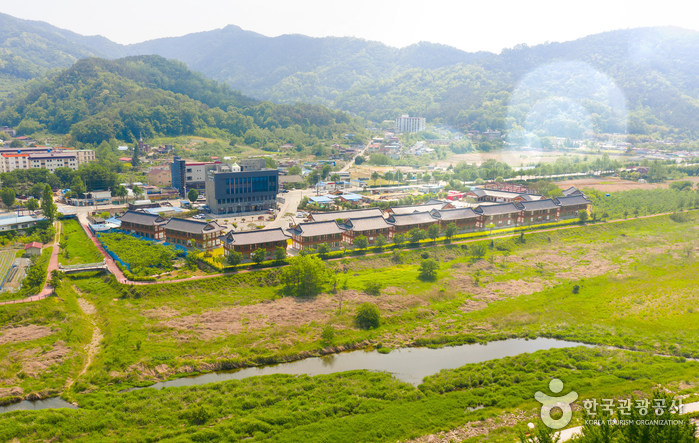
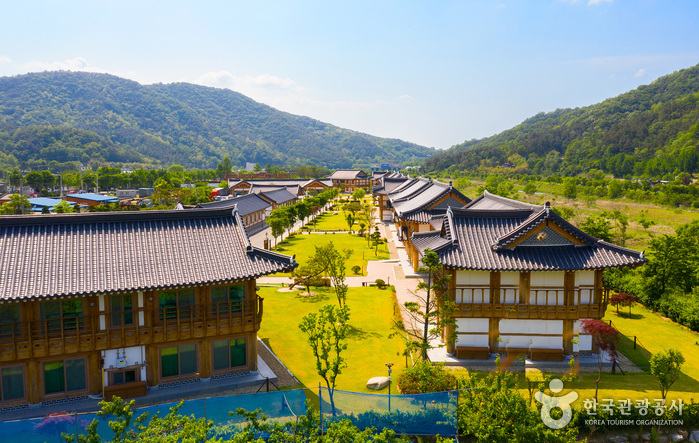
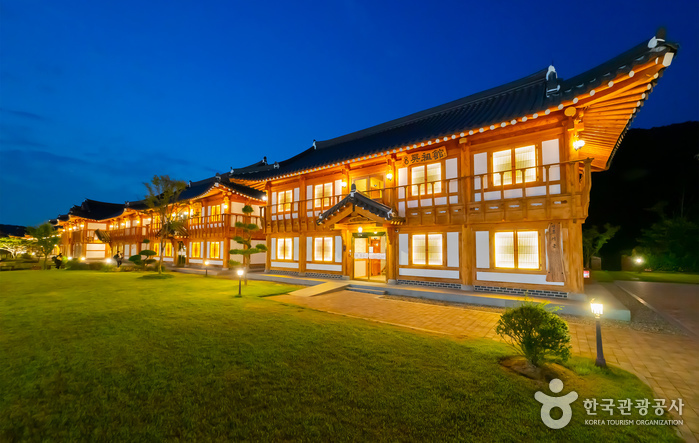
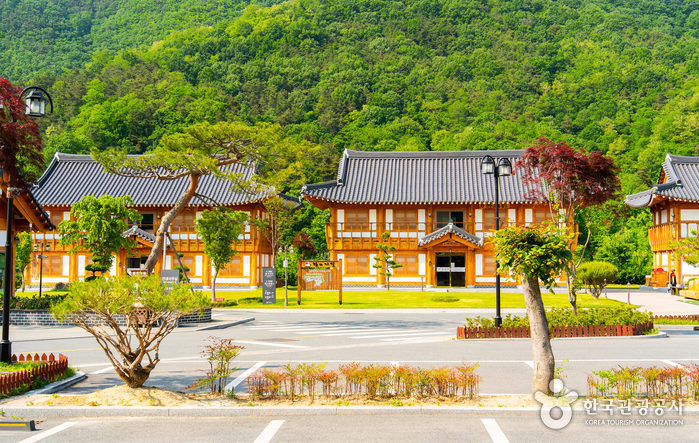
![King of young jo [Korea Quality] / 영조관 [한국관광 품질인증]](http://tong.visitkorea.or.kr/cms/resource/90/2637390_image2_1.jpg)
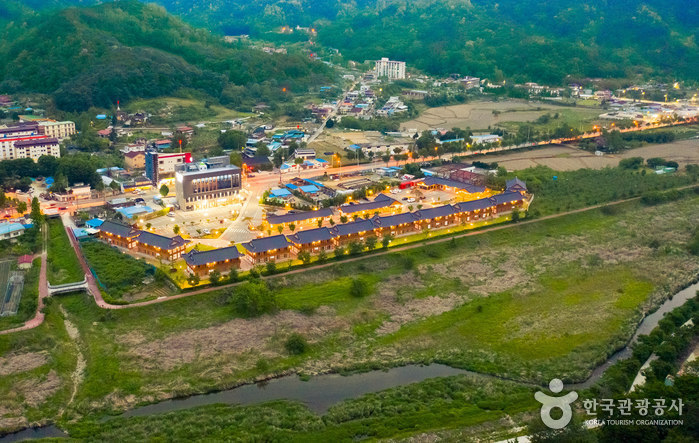
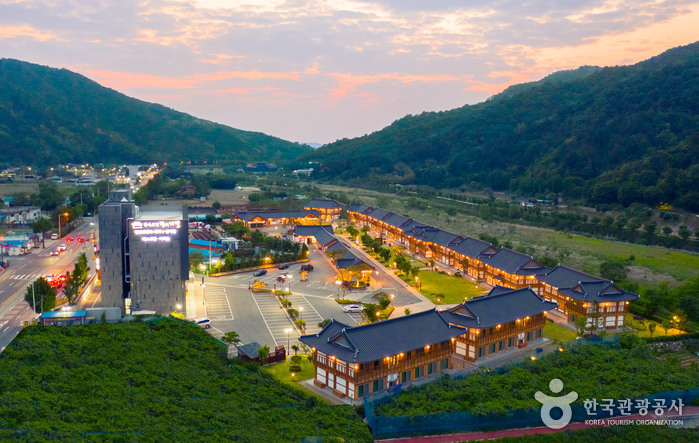

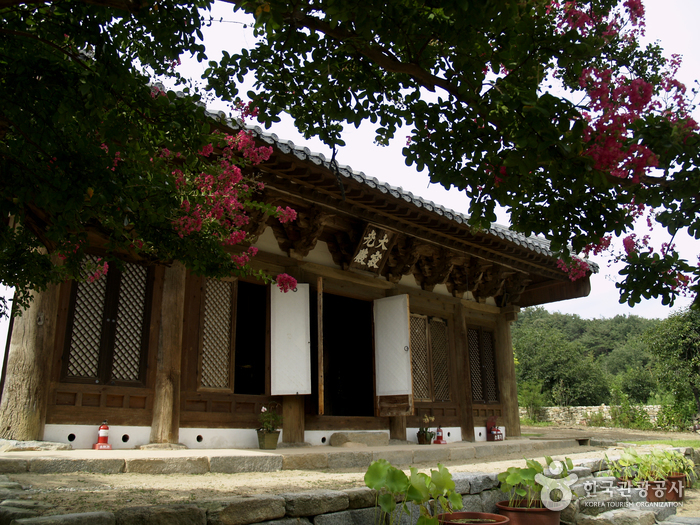
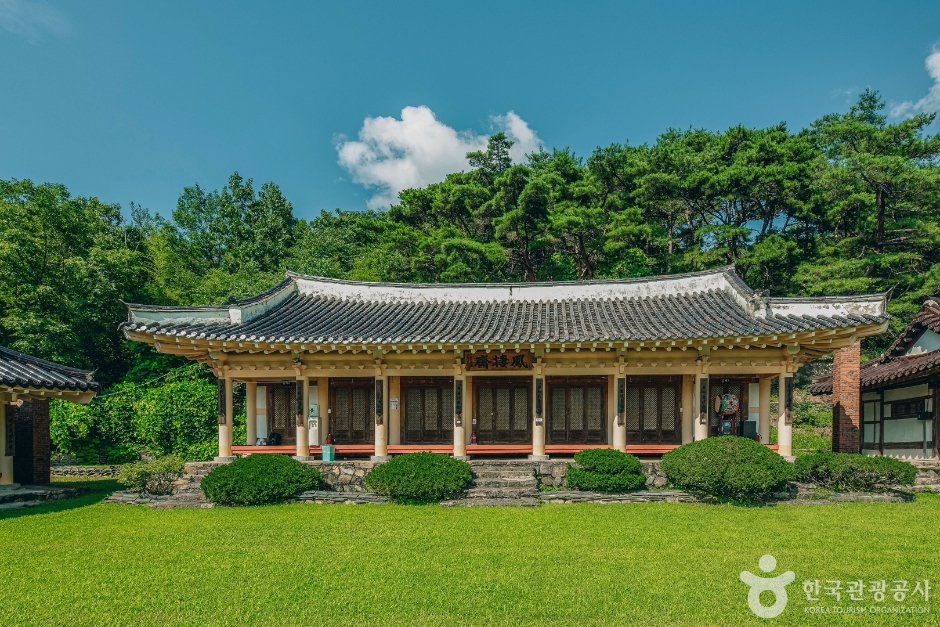
 English
English
 한국어
한국어 日本語
日本語 中文(简体)
中文(简体) Deutsch
Deutsch Français
Français Español
Español Русский
Русский